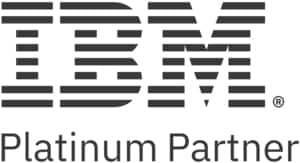November 02, 2018
Bank on Artificial Intelligence to Turn Data into Action
AI is a proven tool for learning more about your customers to reduce fraud and maximize personalization.

How much do you really know about your customers? The answer goes a long way toward determining how much money your business makes — or loses.
That’s why banks and other financial services firms are increasingly using artificial intelligence to get deeper insights into customer needs, wants, habits, risks and more. The lessons learned — including how to maximize AI’s ROI — are equally applicable to many other verticals.
Risks and Regulations
Banks currently use AI for a wide variety of applications, such as assessing credit risk. Another common use is identifying fraud, such as using AI to detect money laundering that otherwise would go unnoticed if the scrutiny were left to humans.
Detecting fraud also is a task that keeps consuming more time and resources as regulators seek to expand their nets, such as with FATF 40, which compiles 40 recommendations from the international Financial Action Task Force. The more laws there are, the less practical it becomes to use people and traditional computing technologies to comply. It’s more effective, including in terms of cost, to use AI as much as possible — a strategy that makes sense in any other vertical with mounting regulatory oversight.
Quality Data Is Key
Financial services AI systems rely heavily on structured data, such as payment histories and other information from credit bureaus. But they also use a lot of unstructured data, including social media posts and professional profiles on sites such as LinkedIn. In fact, half of the AI-related inquires I get from banks come from their marketing departments wanting to use social media to supplement their structured data.
For example, marketing can use AI to identify people whose income level, age, gender or neighborhood make them good prospects for a new product or service. It also can identify life events through purchases, such as a sudden flurry of baby-related orders that suggest that customer might be receptive to a pitch for life insurance or a 529 college savings account.
Of course, those debit card transactions could be for a friend’s baby. But AI’s value doesn’t require 100 percent accuracy. It’s more about inferring to a point that the line of business is comfortable with. For applications such as marketing, 90 percent accuracy still means a lot of upsales and new customers. One way to maximize accuracy is to tap as many sources of structured and unstructured data as possible.
Many banks use natural language processing, a type of AI, so their interactive voice response phone systems can understand what callers want even when they don’t use industry terminology. But NLP also can be applied to unstructured written data, such as social media posts, to understand preferences, intent, patterns and other aspects that otherwise would require an army of humans to analyze.
The one thing that AI can’t do is turn garbage into gold. In fact, data quality is one of the most overlooked and underestimated factors when businesses are developing their initial AI strategies. To maximize effectiveness and ROI, the data must be conditioned into a quality and format that the AI platform can use. The legacy infrastructure providing that data also must be configured to support AI.
All of that is harder than it sounds, which is why banks often bring in an expert such as CDW. CDW also helps develop data governance policies and best practices to ensure that this information is stored securely, complies with laws and is preserved only as long as necessary — all key for making informed business decisions.
To learn more about what CDW can help transform your bank or credit union, visit CDW.com/Finance.
This blog post brought to you by:


